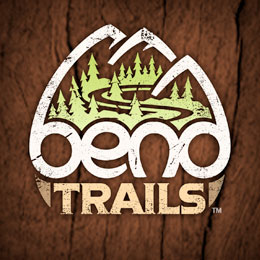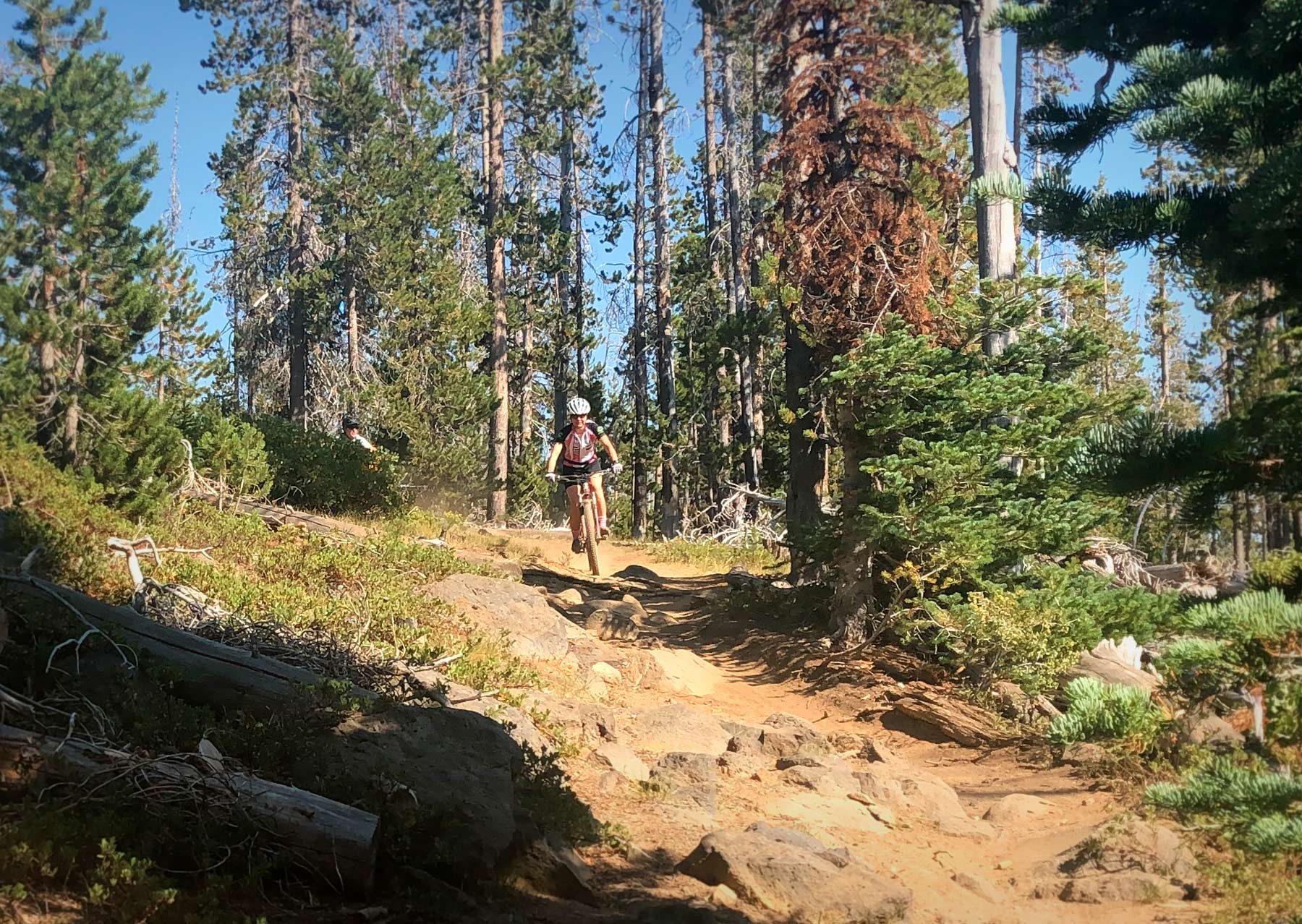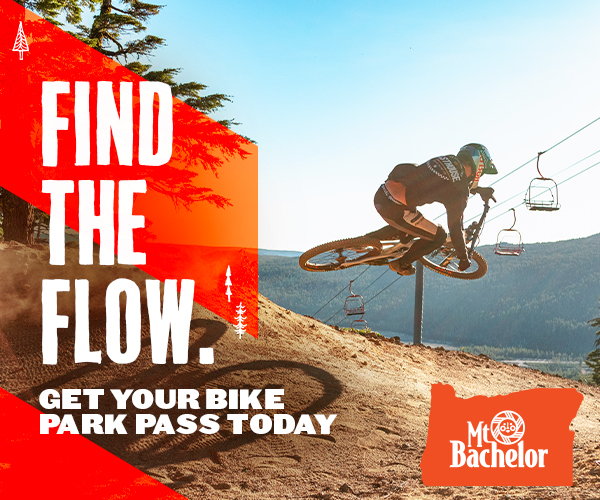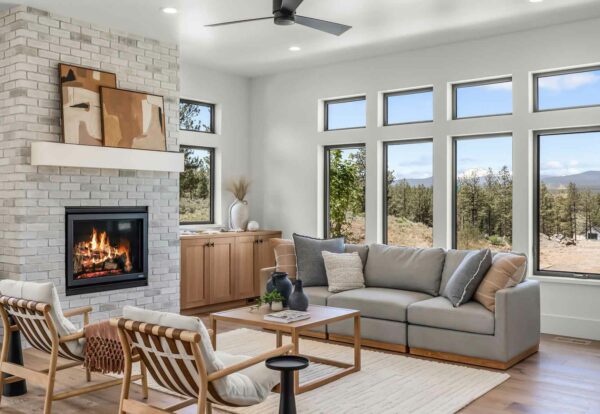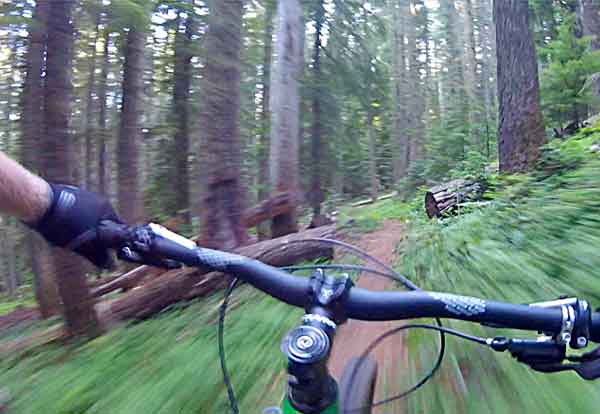A Guide to MTB Trails in Central Oregon

If your bike shop, pub, or store would like to display one of our Trail Etiquette Posters, contact us.
First and foremost, remember that mountain biking is, like all sports, potentially dangerous. Exercise caution and ride within your personal skill level. Always ensure that your bike is properly maintained and free from mechanical issues. There are dozens of great bike shops in Central Oregon — so hit them up and make sure your bike is tuned up and ready to go before hitting the trail. Wear appropriate safety gear, clothing, and a helmet.
Note that riding any of the trails or routes mentioned on this site is done so at your own risk. This includes attending group rides which might be listed on this website or the BendTrails Facebook page.
Your phone runs on batteries. Central Oregon Search and Rescue has needed to save lots of folks who thought their phone was all the navigation they needed. Night in Central Oregon gets cold and dark quickly so stuff a Bend Adventure Map in your pack.
If in doubt about your abilities on a particular section of MTB trail — get off and walk. Consider getting some professional mountain bike coaching if you want to progress to the next level.
E-bikes are not allowed on BendTrails. There are places where e-bikes can be ridden in Central Oregon (Madras East Hills and a few trails in Oakridge), but they are prohibited on all USFS- and BLM-manged hiking, horseback, and mountain bike trails. View this PDF for official information from the US Forest Service. You can also find some good information on this post from our friends at Pine Mountain Sports.
If you’re not familiar with the trail etiquette and ratings in Central Oregon, please take a few minutes to review some general guidelines that our local riders follow.
Guide to Trail Reports
Trail is riding well right now and there are no reports of mud, deadfall, or snow.
Trail is good to go, but expect dry, dusty and loose trail surface and/or occasionally deep sandy areas.
Please don’t ride muddy trails. This makes a LOT more work for COTA volunteers who would rather be building new trails, than fixing your ruts.
Conditions change hourly. Range from hero dirt, mud, ice, puddles, or snow. If the ground was frozen overnight, ride early before it thaws.
Snow is mostly packed down from use and is rideable on a fat bike. Be mindful of icy spots.
Trail bed is covered deep snow. Snow is unpacked and not rideable.
Trail bed has extensive ice coverage. Expect very slick conditions.
This trail has lots of down trees. Riding it will probably mean getting off and climbing over and through tree limbs.
This trail is closed right now. Details of the closure can be found in the trail description.
The current condition of this trail is unknown, if you’ve ridden it recently, please submit a trail report.
Trail Difficulty Ratings
Trails are rated along the common international scale. Always ride within your abilities.
Easy
This is the lowest rating. Average grade is less than 5% with a maximum grade of 15%. Unavoidable obstacles could be 4" or more and these trails often include avoidable obstacles which are larger.
More Difficult
More challenging than easy trails and probably not good for beginners. Trail surface can be loose and uneven. Average grade is less than 10% with a maximum grade of 15%. Unavoidable obstacles could be 8" or more and these trails often include avoidable obstacles which are larger. There will be occasional exposure or drop offs on areas of these trails.
Very Difficult
Trails marked as difficult have trail surfaces which are loose, uneven, and off-camber. Average grade is less than 15% with a maximum grade of 15% or more. Unavoidable obstacles could be 15" or more and these trails often include avoidable obstacles which are larger. There will be frequent exposure or drop offs on areas of these trails.
Difficult Sections
Think of this as a “More Difficult” trail with some “Very Difficult” sections. This trail designation is usually reserved for terrain parks and jump areas — so it’s not commonly seen.
Extremely Difficult
This category is a “Pro” trail which only extremely capable riders should consider riding. Average grade can be 20% or more with a maximum grade of 15% or more. Unavoidable obstacles could be 18" or more and these trails often include avoidable obstacles which are much larger. There will be frequent exposure or drop offs on areas of these trails.
Show Some Trail Love
Please observe the following suggestions when riding anywhere in Central Oregon. There are a few special circumstances unique to Central Oregon that visitors need to be aware of.
Skidding Causes Erosion
Soils here can be very dry in the summer and are easily eroded by excessive skidding. We try to design and build trails with this in mind but mountain bikers should ride so that skidding and hard braking are minimized. Control your speed. Please also AVOID trails that are wet during the spring melting season.
Keep Single Track Single
Most vegetation is fragile and very sensitive to trampling. When passing others stop your bike and put a foot down rather than ride around. This will avoid widening the trail unnecessarily. Use passing lanes whenever possible. When you stop for a break please remove your bike from the trail so others can pass without being forced to go off the tread of the trail.
Some Trails Might Be Crowded
Runners, dog walkers, families, tour groups, racers and recreational cyclists all share the same trails. Please be courteous to other users, and extend a friendly nod or “hello” when passing. You are not any more entitled to use these trails than anyone else; please behave and be friendly regardless of what the other trail users are doing.
Don’t Dumb Down Trails
If you encounter something which you are unable to clean, dismount and walk over the obstacle. Do not go around the feature or start a new line. Do not think that you are “doing somebody a favor” by “fixing” or otherwise removing a technical obstacle.
In addition to the above local guidelines please know and obey the IMBA “Rules of the Trail”:
